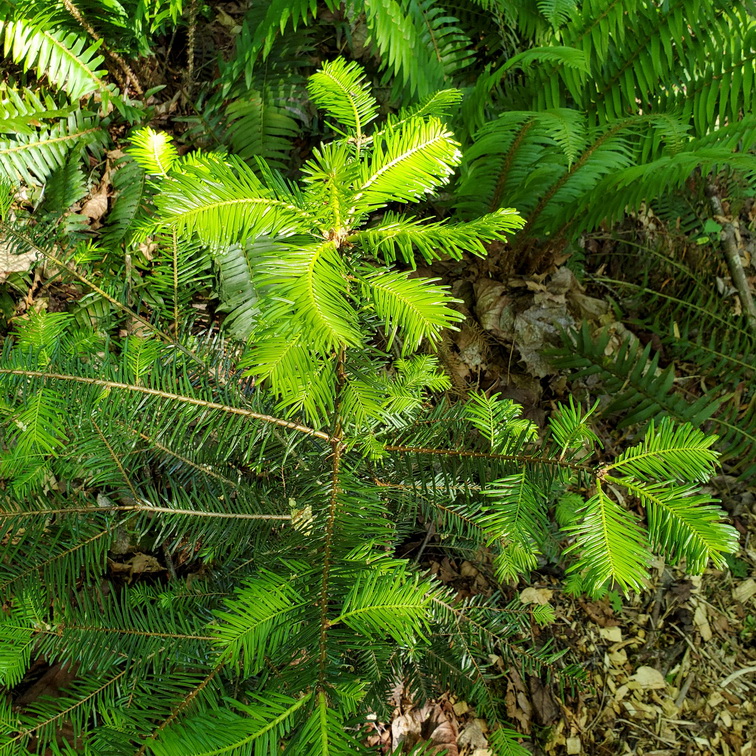Should we be planting conifers in our backyard forests to eventually replace existing large trees? My answer is “no” in conifer forests and “yes” in deciduous forests as I explain below.
Why “No” in Conifer Forests
Prior to European colonization, the idealized ecological succession in the Puget Lowlands resulted in a forest of old-growth Western Hemlock and Western Redcedar. These shade-tolerant species can persist for years under the forest canopy until climax trees topple or die, allowing the hemlocks and redcedars to shoot up into the openings and claim their spot in the sun.
When I started volunteering with forest restoration efforts in Forest Park, we routinely planted hemlock and redcedar in stands of Douglas Fir, but I no longer think that was a good idea. I’ve already written (here) about the potential for hemlock and redcedar to enable crown fires by acting as fire ladders. I’ve also written (here) about the fact that in terms of addressing climate change, it may be another century before our existing forests of Douglas Fir begin to lose more carbon than they accumulate.
Additionally, a recent study (here) found that in the California Sierras, the highly-resilient forests of the past were much less dense than those of today and were largely free of competition from other trees. Because our dry seasons are predicted to become longer, hotter, and drier like the Sierras, this study suggests another reason why we may not want to add new trees into our existing stands of Douglas Fir.
Why “Yes” in Deciduous Forests
I think the place to plant conifers now is in our aging deciduous forests. Many of the existing forests in the Puget Lowlands are dominated by Red Alder and Bigleaf Maple trees which are reaching the end of their natural life spans. Ideally, these forests would already have shade-tolerant conifers growing beneath them ready to take their place. However, for reasons that are not entirely clear, these forests show very little conifer regeneration and without human intervention there will likely be a “pronounced decline in tree canopy in the near future.”
In terms of what shade-tolerant conifers to plant, I think it makes sense to plant a mix of Grand Fir, Western Redcedar, and Western Hemlock. We can make some attempt to anticipate climate change by planting redcedar and hemlock in low-lying areas with wetter soil, and Grand Fir on drier slopes and ridges.
Though Grand Fir is less shade-tolerant than redcedar and hemlock, much of its annual photosynthesis can occur during the winter, especially in leafless deciduous forests. One source (here) suggests that “initial survival and growth of Grand Fir is favored by a moderate overwood shade.” I began planting Grand Fir about five years ago under deciduous canopy and so far the little trees are doing fine, growing slowly, and waiting patiently for their time in the sun after the alders and maples are gone.
